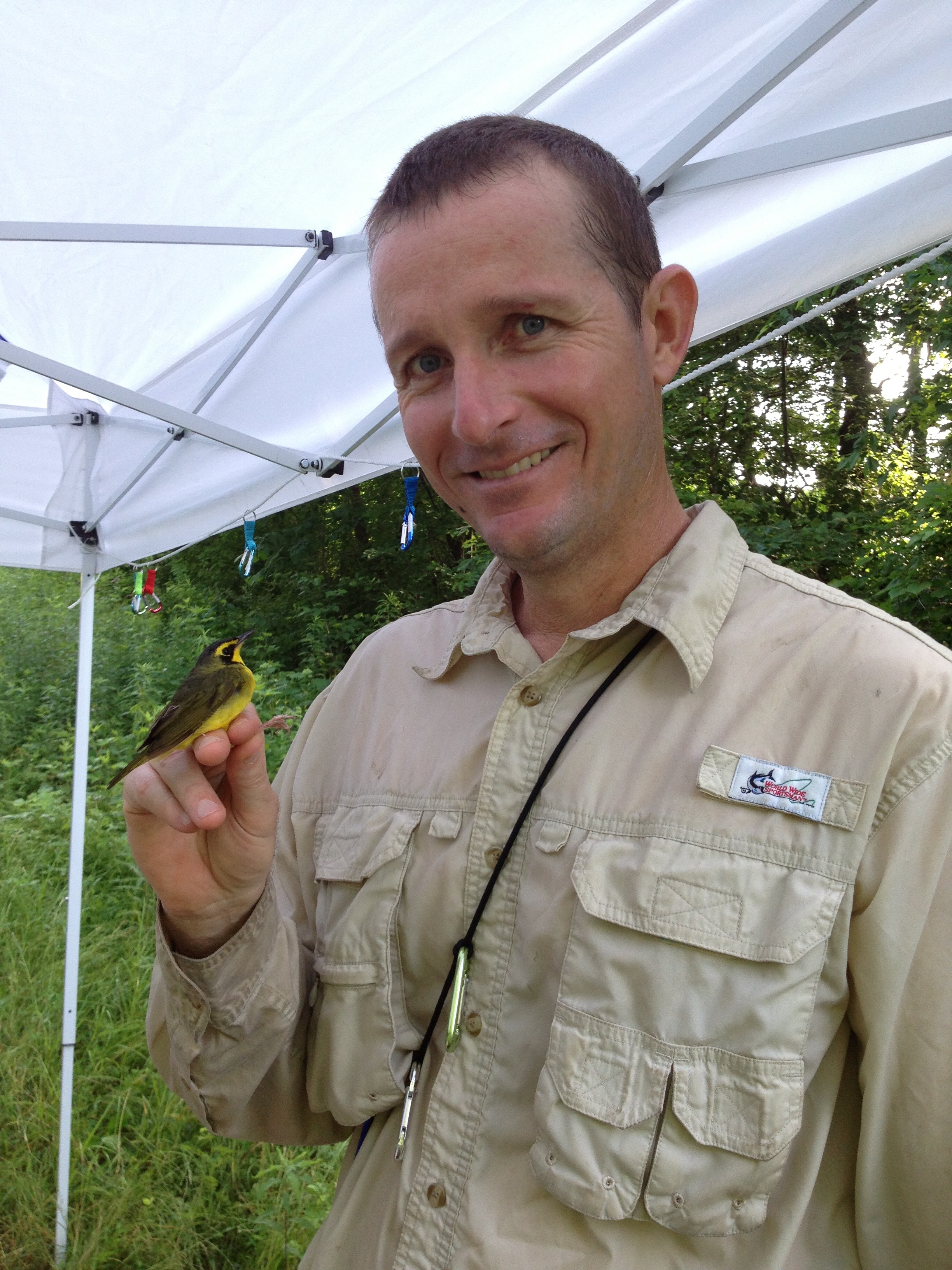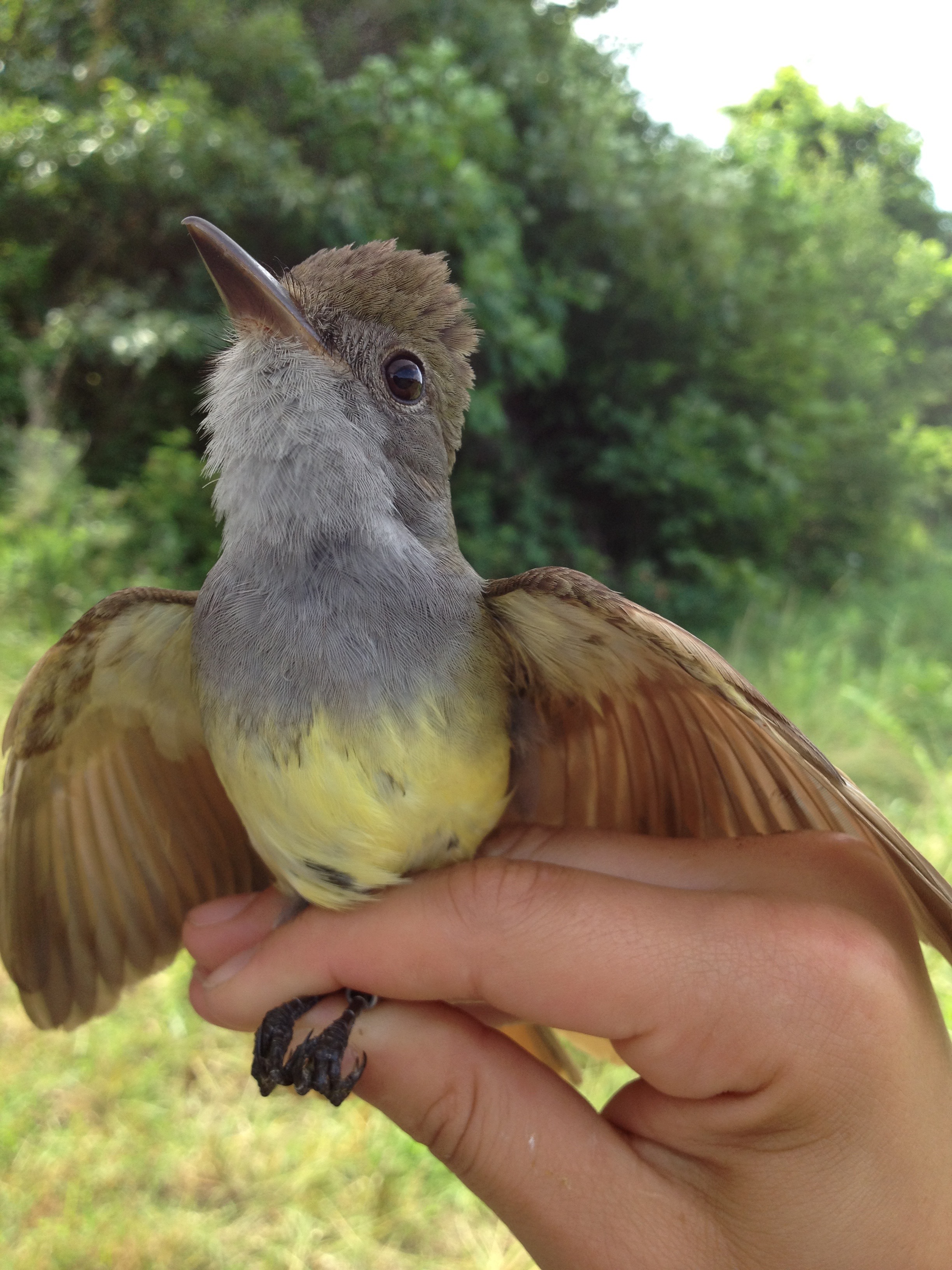Collins Lab

My research interests are broad, but center on examining the determinants and consequences of species diversity at local, regional, and global scales. To date, my research has employed observational, field, computational, statistical, and GIS approaches to understand issues in community ecology, conservation biology, avian ecology, and invasive species. I involve undergraduate researchers to continue and expand my research interests.
Understanding the factors that limit the distribution of species is important for predicting the spread of invasive species, assessing the impact of climate change on biodiversity, implementing effective conservation strategies to protect threatened species, and reducing the spread of human pathogens and emerging diseases. Much of my research involves understanding the forces that limit the geographic distribution of a species: in short, why are species found in some places but not in others. That such a simple question demands such a complex and sophisticated set of answers motivates much of my work. Geographic distributions can be limited by three broad classes of factors: colonization ability, environmental conditions, and interactions with other species. In addition to advances in theoretical and community ecology, understanding the relationship between these forces and geographic distributions can inform strategies to improve conservation and land management, and prevent disease.
To date, my research has employed observational, field, computational, statistical, and GIS approaches to understand issues in community ecology, disease ecology, avian ecology, and invasive species.
Because my research interests require a diverse set of skills, undergraduate researchers with varying interests could participate in my research program (see Research Opportunities). Possibilities exist for field research, laboratory experiments, GIS approaches, and computational and quantitative biology. My collaborative research program broadly trains undergraduate researchers in avian ecology.
If you are interested in joining the lab and are eager to work and learn, read this (see Research Opportunities), then email me or swing by the lab to talk. You can see my current and past student researchers (see People). Most of my students are currently working on avian malaria projects, but I am also open to other questions and study systems.
Community structure and competition
I use null models and Monte Carlo simulations to examine the extent to which competition influences species’ geographic ranges. More specifically, I use presence-absence matrices to analyze the spatial distribution of birds on island archipelagoes and to test whether species exhibit exclusive distributions. Congeneric birds co-occur significantly less frequently than predicted, consistent with a competition hypothesis. However, when examined separately, most genera and guilds do not exhibit patterns that differ from random expectations. Furthermore, differences in habitat preference and barriers to dispersal are two alternate hypotheses that explain most exclusive patterns and are supported by available data. Distributional evidence alone does not implicate competition, and I argue that the range of conditions under which competition is likely to generate exclusive distributions across islands is narrow.

Avian malaria and disease ecology
My lab uses avian malaria as a model host-parasite system to explore the forces that limit the distribution and abundance of birds and their blood-borne parasites and to discover general principles in disease ecology. While it is clear that parasites strongly affect individuals, the extent to which they affect populations and geographic ranges is not well understood. Several lines of evidence suggest that parasites might play an important role in determining population size and distribution: parasites have been shown to cause population cycles in their hosts and to drive some host species to extinction or near extinction (e.g., avian malaria in Hawaii, rinderpest in Africa, chestnut blight in eastern North America).
Avian malaria is a blood-borne disease caused by species in two related genera: Plasmodium and Haemoproteus. The disease is transmitted by insect vectors such as mosquitos and biting flies, which feed on blood and can transmit infections from an infected bird to an uninfected bird while feeding. Avian malaria presents a useful model system because these parasites affect host behavior and host fitness, they occur worldwide except for Antarctica, and pathogenicity ranges from mild to lethal and varies with host species and parasite lineage. Ultimately, understanding the dynamics of avian malaria can provide insight into how and when zoonotic diseases such as avian flu and West Nile Virus are able to spread from other animals to humans.
My lab has several ongoing projects in this area, and students in my lab are actively involved in this research. One study investigates how individual- and species-level host traits influence malaria prevalence across species in west Tennessee. Another study includes a large sample of Chimney Swifts to examine how sample size influences our quantification of a host species’ parasite community. A third project surveys regional bird communities and investigates the relationship between host abundance and parasite prevalence within and across species. Another project is a regional study of the prevalence, diversity, and relationships between haemosporidian parasites and their avian hosts in South America.
We sample birds from field sites with mist nets, identify, age, and sex captured birds, attach a USGS band, and draw a blood sample. In the lab, we extract DNA and run PCR analyses to detect infections. Positive infections are sequenced to identify the particular parasite lineage (species), and we use R and SAS to create interaction webs between hosts and parasites and to examine statistical relationships between predictor variables and malaria infection.

Changes in avian body size and climate change
Foces that shape the geographic distributions of species can affect species in other ways too. Mounting evidence continues to demonstrate that the Earth′s climate is changing rapidly. Particularly for birds and other endotherms, climate change has been linked to changes in phenology, morphology, geographical distributions, and population size. Body size has been predicted to change with increasing temperatures based on Bergmann’s rule, a biogeographic pattern that relates larger body sizes of endothermic animals to increasing latitude (a correlate of decreasing temperature). With two collaborators, two students and I are examining the hypothesis that warmer temperatures associated with climate change have resulted in decreased body sizes of birds since 1980.
Ecological drivers of tick populations and tick-borne diseases
Some contagious diseases are transmissible between animals and humans; well-known examples of these "zoonotic" diseases include Ebola, SARS, and West Nile. In the Southeast, the causes and ecological determinants that influence the transmission of tick-borne diseases to humans remain elusive. Ehrlichia is a common tick-borne disease that causes vomiting, high
fevers, and muscle and joint aches. Risk of Ehrlichia infection varies widely across the Southeast, and it is hypothesized that spatial variation in risk is due to regional differences in the abundance of tick species. Tick distributions are dynamic, and recent range expansions are hypothesized to reflect changing land use patterns, increasing populations of deer and other wildlife hosts, globalization, and climate change.
I am collaborating with scientists from the University of Tennessee, the University of Memphis, and Christian Brothers University to examine the ecological determinants of the distributions and abundances of ticks and tick-borne diseases and understand how bird, mammal, and vegetative communities and landscape features influence tick densities across habitats in the Southeast. We are developing statistical models to identify the ecological variables that are associated with tick population densities and with the prevalence of Ehrlichia to construct an ecological framework to understand the factors that have caused an increase in the number and prevalence of tick-borne diseases in the Southeast. This project is a natural extension of my research in range limits and avian disease ecology aims to combat current and emerging tick-borne diseases and to improve human health outcomes.
Other research
With a team of collaborators and an undergraduate advisee, I have studied geographic patterns of song variation in the Dickcissel. I have also investigated the consequences of biotic homogenization for the loss of global biodiversity and how estimates of species richness from rarefaction are biased by nonrandom spatial patterns. With a team of collaborators, I have examined consequences of host plant genotypic diversity on species diversity and community stability of associated arthropods.